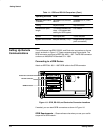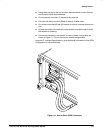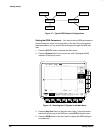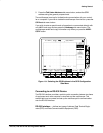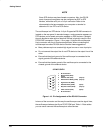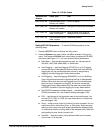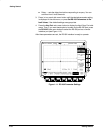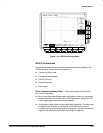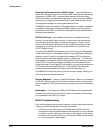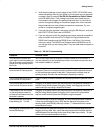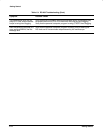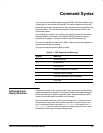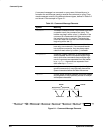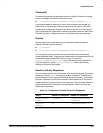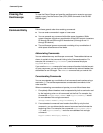
Getting Started
Getting Started
1Ć12
When the Oscilloscope Senses a BREAK Signal Ċ on the RSĆ232 port, it
returns DCL followed by the end of line terminator. Internally the oscilloscope
behaves as if a GPIB <DCL> command was received (input and output
buffers are flushed, and the oscilloscope waits for a new command). BREAK
signals do not change oscilloscope settings or stored data and do not interĆ
rupt front panel operation or nonprogrammable functions.
If a BREAK is sent in the middle of a character stream, a couple of characters
immediately preceding or following the BREAK may be lost. The controller
should wait until the DCL and end of line terminator string is received before
sending more characters.
RSĆ232 I/O Errors Ċ are reported when there is a problem with parity,
framing, or input/output buffer overruns. To report errors, the oscilloscope
posts an event code (see Status and Events on page 3Ć1). When an error
occurs, the oscilloscope discards all input and output and waits for a new
command. A count of these errors since last powerĆon is included in the
UTILITY Diag Error Log.
You can use the RS232 Line Snapshot entry of the error log to help establish
an RSĆ232 connection. The snapshot reports if the oscilloscope is waiting to
receive a control Q (yes/no), the state of the hardware CTS line (high/low),
and if characters have been received (yes/no). If Waiting For ^Q is Yes, the
oscilloscope must receive an XON character before it will transmit any more
data. If CTS is Low and hard flagging is enabled, the oscilloscope will not
transmit any data. If hard flagging is not enabled, you should ignore the value
of CTS since the oscilloscope ignores it. If Chars Rcvd is Yes, the oscilloĆ
scope has received at least one character since the last powerĆon.
The RS232 Errors line of the error log lists the number of parity, framing, and
overrun errors since the last powerĆon.
Service Requests Ċ are part of the GPIB interface. There is no counterpart
for RSĆ232. However, if you want to check the status of each command sent,
you can append a *STB? query after every command and read the response
string.
Hardcopies Ċ The Centronics, GPIB, and RSĆ232 ports are always active.
However, only one port at a time can be used for hardcopies. The hardcopy
port is selected in the UTILITY I/O menu.
RSĆ232 Troubleshooting
If the oscilloscope and the personal computer or printer have trouble commuĆ
nicating, use the following steps to correct the problem:
1. Verify that you are using the correct RSĆ232 cable and that it is firmly
connected to both the oscilloscope and the correct port on your personal
computer or printer. Verify that your printer or the program on the personĆ
al computer is using the correct port. Verify that the cable is wired correctĆ
ly. Try your program or printer again.



